Occupational environment monitoring at a perfume manufacturing factory
99,000 ₫
Note: The above price is calculated for one sample, and the price may fluctuate depending on the area of the environment to be monitored and market movements. For more accurate pricing support, please refer to the price list or contact our consulting staff directly.
Monitoring the environment of a perfume production factory is a session of collecting, analyzing, and evaluating workplace factors that may be harmful to workers’ health.
Table of Contents
Toggle1. Overview of Perfume Manufacturing Factory
a. What is a perfume manufacturing factory?
Factory for perfume production is a specialized facility used to manufacture and package perfumes. Perfume is a fragrance product used to create a pleasant scent for the body and surrounding environment. Perfume manufacturing factories usually carry out processes such as formulation, fragrance blending, quality testing, packaging, and sealing of the products.
During perfume production, factories typically use main ingredients including natural and synthetic fragrances, solvents, fixatives, colorants, preservatives, and other additives. The perfume production process is often complex and requires careful consideration to ensure the desired quality and scent.
Perfume factories usually apply advanced production processes and quality control measures to ensure that the final product meets the required quality and safety standards.

b. Production stages in a perfume manufacturing factory
The production stages in a perfume manufacturing factory include:
- Mixture preparation: In this stage, main components such as natural and synthetic fragrances, solvents, fixatives, and other additives are combined according to specified ratios and formulas. This process requires accuracy and careful consideration to create a high-quality mixture with the desired fragrance.
- Fragrance blending: The mixture from the formulation process is put into blending machines to combine and create the characteristic perfume scent. Blending ensures uniformity and consistency of the mixture.
- Quality testing: After blending, perfume samples are taken for testing to ensure quality and that the fragrance meets standards. Tests may include stability, scent, longevity, compatibility, and other factors.
- Packaging: After passing quality control, the perfume is packaged into bottles or containers according to specified volumes and designs. Bottles or containers may be made of glass, plastic, or other materials depending on the product requirements and style.
- Sealing: Once packaged, sealing is performed to ensure the product is secure and to prevent leakage or unwanted exposure.
- Final inspection: Before shipment, all perfume products undergo a final inspection to ensure compliance with quality, environmental, and safety standards.

c. Types of machinery used in a perfume manufacturing factory
In a perfume manufacturing factory, the following machinery may be used:
- Mixers: Used to blend perfume ingredients. Mixers can be adjusted to ensure uniformity and consistency of the mixture.
- Bottle and container filling machines: Used to fill perfume into bottles or containers. These machines can be automatic or semi-automatic to increase production efficiency.
- Seal cutting machines: Used to cut and seal bottles or containers after packaging.
- Box packing machines: When perfumes are packaged in boxes, these machines are used to pack and ensure the product’s safety and preservation.
- Quality inspection machines: Used to check perfume parameters such as fragrance, longevity, compatibility, stability, and other quality indicators.
- Printing and labeling machines: Used to print and apply labels to perfume bottles or containers.
- Packaging and wrapping machines: Used to pack and wrap perfume products in protective packaging.
- Final inspection machines: Used for the last check before shipment to ensure compliance with environmental, safety, and quality standards.

d. Occupational diseases that workers in perfume factories may face
Workers in perfume manufacturing factories may be exposed to chemicals and environmental factors that can cause various occupational diseases. Some common occupational diseases include:
- Respiratory diseases: Exposure to fumes or particles from chemicals during perfume production may cause respiratory issues, including bronchitis, chemical pneumonia, asthma, and other respiratory problems.
- Skin diseases: Direct or prolonged contact with chemicals during perfume production may cause skin irritation, dermatitis, eczema, or other skin issues.
- Eye diseases: Eyes may be irritated or damaged due to chemical exposure during perfume production, resulting in redness, itching, tearing, infections, and other eye-related problems.
- Digestive diseases: Exposure to certain chemicals in perfume production may lead to digestive issues such as gastritis, colitis, digestive disorders, and other gastrointestinal problems.
- Nervous system disorders: Exposure to some chemicals may affect the nervous system, causing headaches, dizziness, blurred vision, insomnia, memory loss, and other neurological symptoms.
- Cardiovascular diseases: Some chemicals used in perfume production may negatively affect the cardiovascular system, causing issues like high blood pressure, arrhythmias, and other heart-related problems.

e. Common perfumes on the market
There are many popular perfumes on the market, each with its own fragrance and style. Some common examples include:
- Perfumes for men:
- Aqua di Gio (Giorgio Armani)
- Bleu de Chanel (Chanel)
- Sauvage (Dior)
- Acqua di Parma (Acqua di Parma)
- Le Male (Jean Paul Gaultier)
- Perfumes for women:
- Chanel No.5 (Chanel)
- Coco Mademoiselle (Chanel)
- Flowerbomb (Viktor & Rolf)
- La Vie Est Belle (Lancôme)
- Black Opium (Yves Saint Laurent)
- Unisex perfumes (for both men and women):
- CK One (Calvin Klein)
- Jo Malone London Wood Sage & Sea Salt (Jo Malone)
- Tom Ford Black Orchid (Tom Ford)
- Byredo Gypsy Water (Byredo)
- Maison Francis Kurkdjian Baccarat Rouge 540 (Maison Francis Kurkdjian)
These are just some examples of popular perfumes. There are many other types and brands to suit individual preferences.
2. Overview of occupational environment monitoring services
a. What is occupational environment monitoring in perfume factories?
Occupational environment monitoring (or workplace environmental measurement) in perfume factories is the activity of collecting, evaluating, and analyzing measurement indicators of workplace environmental factors in perfume factories to take timely measures, minimize environmental harm to workers’ health, and prevent occupational diseases. Occupational environment monitoring is mandatory for perfume manufacturing factories.
Occupational environment monitoring plays a crucial role in protecting and improving workers’ health because the main asset of a business and its direct source of profit is the workforce. Workers who are frequently exposed to risk factors or occupational hazards exceeding allowable standards may suffer health effects and develop occupational diseases.
REGISTER FOR OCCUPATIONAL ENVIRONMENT MONITORING SERVICE
b. Nam Viet’s occupational environment monitoring program
Nam Viet’s occupational environment monitoring program is designed by engineers specialized in occupational safety and environmental protection. To ensure the health and safety of workers, the program uses modern measurement methods to monitor air, water, microclimate, physical factors, dust, and other workplace elements. This program is crucial for ensuring a safe working environment and protecting workers’ health.
Additionally, Nam Viet’s monitoring program plays an important role in researching and developing new solutions to improve workplace environmental quality. With the dedication and professionalism of its monitoring experts, Nam Viet’s exclusive program is becoming a breakthrough in occupational safety management and environmental protection in Vietnam.

c. Standardization in workplace measurement procedures
Standardization in Nam Viet’s workplace measurement procedures is crucial to ensure the quality of measurement results. To guarantee accuracy and reliability, the program follows recognized standards and procedures of the Ho Chi Minh City Department of Health. This ensures that collected data can be reliably used to assess the workplace environment and make decisions to improve workplace conditions and protect workers’ health.
These standardized procedures also ensure that measurements are conducted by a highly qualified monitoring team with many years of experience, enabling managers and experts to trust Nam Viet’s results and make accurate, valuable decisions to protect workers and the environment.
By applying standardization in workplace measurements, Nam Viet demonstrates its commitment to providing a safe working environment, protecting workers’ health, and contributing positively to the development and enhancement of occupational safety and environmental management in Vietnam.
d. Reporting the results of perfume factory monitoring
Occupational environment monitoring results are prepared according to Form 04, Appendix III issued with Decree 44/2016/ND-CP and made in 2 copies: one sent to the contracting enterprise and one kept by the monitoring organization.
The storage period for occupational environment monitoring results is unlimited according to the law.

e. Frequency of occupational environment monitoring according to the law
According to clause 2 of Article 18 of the Law on Occupational Safety and Hygiene 84/2015/QH13, employers must organize occupational environment monitoring to assess harmful factors at least once a year.
f. Deadline for submitting occupational environment monitoring reports according to the law
The deadline for report submission is before December 31 each year. Enterprises at production facilities are required to submit monitoring results to the local Department of Health where the facility is headquartered and where employees are working.
When there are changes in technology, production processes, or facility upgrades that may introduce new hazardous factors, enterprises must update occupational hygiene records regarding harmful factors that require monitoring.
g. Penalties for violations of occupational environment monitoring by employers
According to Article 27 of Decree No. 12/2022/ND-CP dated 17/01/2022 on administrative penalties in labor, social insurance, and Vietnamese workers working abroad under contracts:
- Clause 2: A fine of 2,000,000 – 5,000,000 VND for employers who fail to publicly inform employees at the monitored workplace about monitoring results and hazard control evaluations immediately after results are available.
- Clause 3: A fine of 20,000,000 – 40,000,000 VND for employers who do not conduct occupational environment monitoring to control health risks according to the law.
- Clause 4: A fine of 40,000,000 – 60,000,000 VND for employers who cooperate with monitoring organizations to commit fraud in monitoring activities but have not reached criminal liability.
3. Harmful Environmental Factors for Workers in Perfume Production Factories
In perfume production factories, several environmental factors can be harmful to workers. Below are some potential environmental hazards:
- Fragrances and chemical compounds: The perfume production process uses many fragrances and chemical compounds. Prolonged exposure to these substances can cause skin, eye, or respiratory irritation.
- Chemical vapors: During perfume production, chemical vapors may be released from the products used. These vapors can cause discomfort and irritation to the eyes, nose, throat, and respiratory system.
- Dust and fine particles: During processing and packaging, dust and fine particles may become airborne. Exposure to dust and fine particles can cause eye irritation, respiratory problems, and allergies.
- Noise: Some production processes generate high noise levels from machinery or technological processes. Continuous and loud noise can cause stress, reduce work efficiency, and damage hearing.
- Chemical exposure: Workers may come into contact with chemicals such as solvents, detergents, or cleaning agents. Prolonged or improper exposure can cause skin irritation, allergies, or other health issues.
REGISTER FOR OCCUPATIONAL ENVIRONMENT MONITORING SERVICE
4. Measures to Improve the Working Environment in Perfume Production Factories
To improve the working environment in perfume production factories and protect workers’ health, the following measures can be applied:
- Chemical management: Ensure the storage, use, and handling of chemicals in the factory comply with safety and environmental regulations. Use ventilation systems, vacuum extraction, and other measures to reduce exposure to chemical vapors and dust.
- Ventilation systems: Improve factory ventilation to reduce exposure to chemical vapors, toxic gases, and dust. Ensure the ventilation system works efficiently and is regularly inspected and maintained.
- Training and guidance: Provide training and guidance to workers on occupational safety, working procedures, and use of personal protective equipment. Ensure workers understand potential risks and protective measures.
- Use of personal protective equipment: Ensure workers use personal protective equipment such as masks, gloves, goggles, protective clothing, and safety shoes correctly to prevent direct contact with chemicals and dust.
- Noise control: Apply noise control measures such as sound barriers, noise-canceling headphones, or limiting exposure time to loud noise.
- Dust control: Establish effective dust extraction systems and regularly clean and maintain the factory to reduce dust exposure during production.
- Assessment and monitoring: Conduct risk assessments and regular monitoring to ensure compliance with occupational safety regulations.
- Regularly conduct occupational environment monitoring in factories, collect and analyze harmful factors, and implement adjustments to reduce hazards and prevent occupational diseases for workers.
5. Benefits of Periodic Perfume Factory Environment Monitoring
An Toan Nam Viet provides businesses with outstanding benefits when using occupational environment monitoring services according to Decree 44/2016/NĐ – CP on the management and control of harmful factors in the workplace affecting workers.
- Businesses can proactively control harmful factors in workshops or factories.
- Receive advice and recommendations to minimize harmful factors and improve workplace environmental quality.
- Indirectly protect human resources, the key factor in business development.
- Reduce the impact of occupational diseases on health, minimizing future medical costs.
- Improved worker health leads to higher product quality and ensures consistent production output.
- Comply with labor safety regulations and avoid legal risks.
- Enhance credibility and professionalism, elevating the company’s brand.
An Toan Nam Viet’s environmental monitoring service is a solution to reduce occupational disease risks, contributing to a clean and high-quality working environment.

6. Nationwide Occupational Environment Monitoring Center
An Toan Nam Viet Occupational Environment Monitoring Center is a professional unit for supervising and measuring occupational environment quality across all provinces in Vietnam. With experienced monitoring specialists, the center uses modern measuring equipment to ensure accuracy and reliability.
In addition to monitoring services, the center supports clients in planning, handling, and tracking occupational environment issues. With the motto “customer-centric,” the center prioritizes client satisfaction and provides optimal solutions for businesses.
REGISTER FOR OCCUPATIONAL ENVIRONMENT MONITORING SERVICE
With investments in technology, equipment, and workforce, An Toan Nam Viet’s monitoring center has become a reputable unit in occupational environment monitoring in Ho Chi Minh City with the following objectives:
- We value our brand reputation and service quality.
- We provide clients with the best and most suitable solutions.
- Alongside experienced Masters and Engineers, aiming to protect the environment and benefit businesses.
- Clients using An Toan Nam Viet monitoring services receive professional support from experts and the best cost advantages.
The occupational environment monitoring process at An Toan Nam Viet includes the following steps:
- Before monitoring, ensure all equipment is calibrated according to legal regulations.
- Follow the committed occupational environment monitoring procedures with the Department of Health.
- Report monitoring results truthfully to employers.
- If results indicate unsafe conditions, An Toan Nam Viet will support remediation measures and the workplace will:
- Implement measures to improve working conditions, minimizing harmful factor exposure and preventing occupational diseases.
- Organize health check-ups to detect occupational diseases early for workers in unsafe positions.
- Provide material compensation to workers according to labor law regulations.

7. Occupational Environment Monitoring Pricing
To help businesses conduct professional and effective occupational environment monitoring, An Toan Nam Viet provides a detailed price list for monitoring services with quality and reasonable costs.
- Our price list provides detailed information on all monitoring services offered, including costs for travel, measurement, analysis, and reporting. Clients can trust the accuracy and reliability of our monitoring reports.
- We commit to offering competitive and reasonable prices, while providing fast and professional consultation for all monitoring service inquiries.
- With An Toan Nam Viet’s monitoring price list, clients can easily select service packages suitable for their needs, ensuring maximum satisfaction with professional service quality.
No comments yet


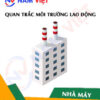
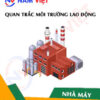
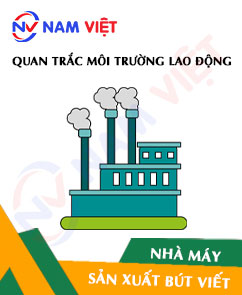
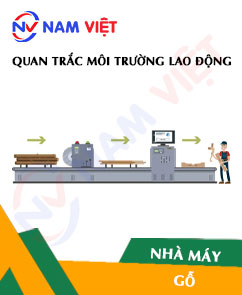

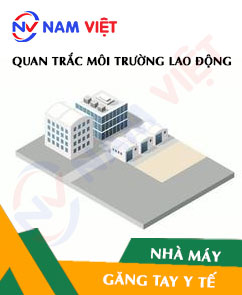

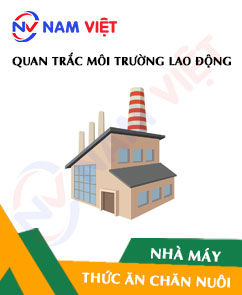


Review Occupational environment monitoring at a perfume manufacturing factory
There are no reviews yet.